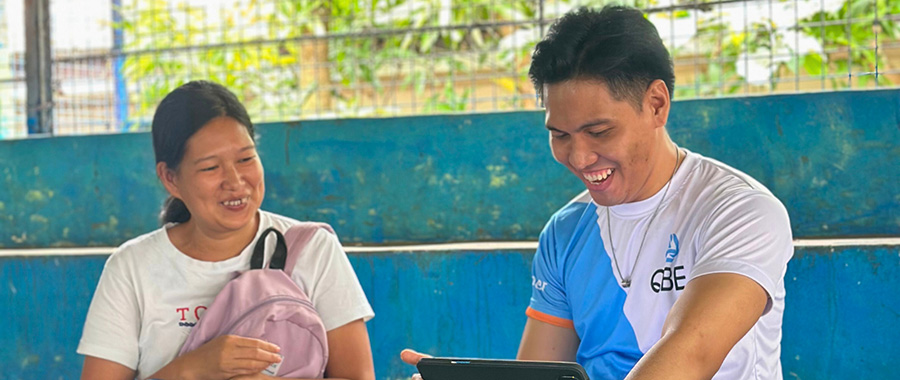Typhoon Quinta (international name: Molave) struck in 2020, and Angeline remembers it as one of the strongest to hit their community in Tanay, Rizal. “That was when a huge tree fell on our house while we were inside. We were trapped. That’s what we experienced when the typhoon hit,” she recalled.
Angeline, 32, lives with her husband Ernie and two children, JM* and Faye* aged eight and six. To make ends meet, she produces barbecue sticks at home, while Ernie works as a construction laborer earning between P300 to 500 a day. Together, they bring in around P 3,000 to 5,000 a month. Their income often falls short of covering even the family’s basic needs.
She recalls they had not prepared for the disaster—there was no go-bag, no evacuation plan, and little awareness of the typhoon’s severity or when it would reach them. That night during Quinta, her family had to be led by community leaders to the barangay official’s house, which served as an emergency shelter. The experience left her shaken. “We thought it was just heavy rain. We did not expect that the typhoon would bring such strong winds and danger,” Angeline said.
Living in a remote sitio makes things harder. It takes about three hours to reach their sitio from the barangay central area, where markets, schools, and health services are located. During disasters, help and resources take even longer to arrive, leaving families like Angeline’s more vulnerable.
When a Family Preparedness Orientation through Save the Children’s Project SECURE supported by QBE Foundation was recently conducted in her community, Angeline eagerly joined. Families learned how to create their own preparedness plans, establish evacuation procedures, and prepare emergency essentials. One important change for her is that preparedness is now a shared responsibility among family members. Before, her husband was the one monitoring news and updates, but she believes the whole family should be involved. She makes sure her children know what to do and prepares their essentials in case they need to evacuate. Above all, she prioritizes their safety and well-being.
Save the Children also distributed household and hygiene kits to 154 families in four barangays in Tanay, Rizal. Each kit contained blankets, mats, mosquito nets, cooking utensils, plates, and hygiene supplies. Families can use these life-saving resources during evacuation and emergencies.
With both knowledge and resources, families like Angeline’s now feel more confident and equipped to keep their children safe. “I have learned things that I can apply to my family. I can also share these lessons with others so we can all be ready when calamities come. Whenever disasters like this are coming, the most important thing is the safety of our family,” said Angeline. #
*Names have been changed for safeguarding.

Angeline, 32, smiles as she shares with a QBE volunteer how learning about family preparedness has given her confidence to keep her children safe during disasters. (QBE/Save the Children)